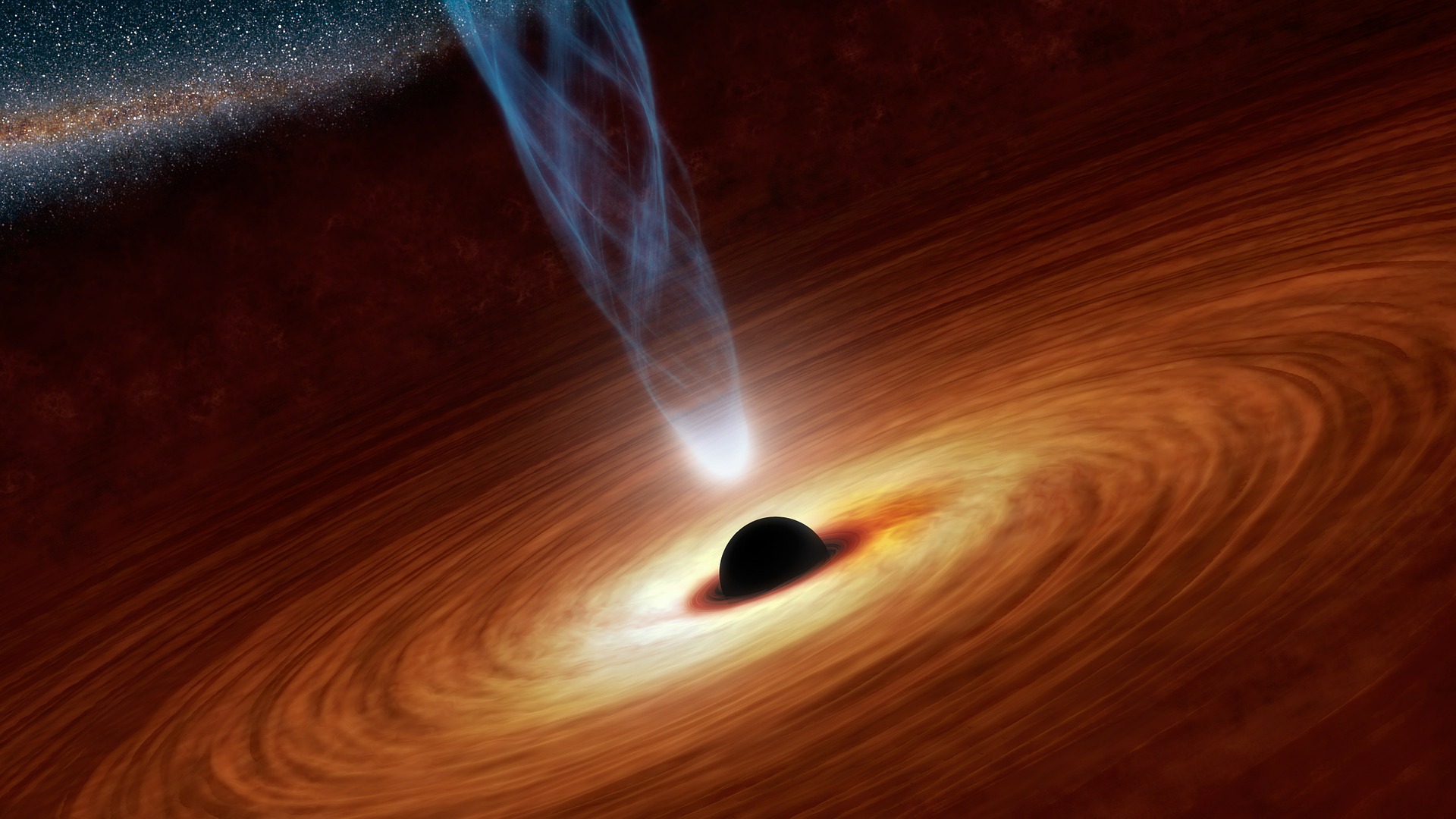When I first learned about black holes, I was 7 or 8 years old. They scared me so much that I genuinely thought a black hole would come and suck up my friends and family members and that we would all cease to exist. As time went on, I learned to accept black holes’ existence and the fact that it would be unlikely for a black hole to come to Earth anytime soon.
Large stars produce energy at their core. Heat and pressure from this push outwards toward the edges of the star. Directly opposite to them is gravity pushing inwards toward the center of the star.
Eventually, the heat and pressure will die out, and this is when gravity will out-power energy from the core and push all the way inwards to the center of the star. The star then collapses, and there is a supernova explosion (the biggest explosion humans have ever seen). What’s left behind is a sphere that has the diameter of New York City but the mass of 10 suns, also known as a black hole.
The more mass something has, the bigger its gravitational pull. The gravitational pulls of black holes are so strong that even light can’t escape them. This is due to the fact that they generally have a huge mass. Black holes were actually predicted by Albert Einstein’s theory of general relativity: it showed that when a massive star dies, it produces a dense core. It also showed that if the core was more than three times as massive as the sun, the gravitational pull would out-power all other forces and a black hole would appear.
The edges of a black hole are called the event horizon. An object cannot escape the black hole’s gravitational pull after passing the event horizon. What happens to the object depends on the type of black hole. There are two types of black holes: the stellar-mass black hole and the supermassive black hole. Stellar-mass black holes are as massive as three to dozens of suns. These black holes are varied throughout the Milky Way. Supermassive black holes are as massive as 100,000 to billions of suns. These are found at the center of most big galaxies, including the Milky Way.
Interestingly, stellar-mass black holes have a stronger gravitational force than the supermassive black holes. Being pulled in by a stellar-mass black hole will cause your body to be stretched like a rubber band until you are ripped apart. This is called spaghettification and can happen before you even cross the event horizon.
On the other hand, being pulled in by a supermassive black hole means you can cross the event horizon in one piece. You’ll then start free-falling until you reach the black hole’s point of singularity (the center of the black hole where density is infinite and time and space break down). You’ll then be squashed and merged with the point of singularity. But someone observing you from a distance will see you falling in slow motion, then becoming frozen, and then just dimming away until you cease to exist.
At the event horizon, time becomes still and space is moving forward into the black hole (you can think of it as time and space swapping roles). There is also evidence of intermediate-sized black holes, but we don’t know too much about them.
When I was in seventh grade, my science teacher was telling us about how scientists had detected gravitational waves (invisible ripples in space) and it was evidence for a black hole. There are usually two sources of gravitational waves: two neutron stars merging and two black holes merging. When two black holes merge, they create one big black hole.
Even though black holes seem like they’re scary, they’re a really cool thing that exist all across our universe.
VAAGEESHA DAS is a rising senior at Morgantown High School.
Information comes from:
- Bolles, D. (n.d.). Black Holes. NASA. https://science.nasa.gov/astrophysics/focus-areas/black-holes;
- Conover, E. (2021, June 28). Gravitational waves reveal the first known mergers of a black hole and neutron star. Science News. https://www.sciencenews.org/article/gravitational-waves-ligo-first-black-hole-neutron-star-merger;
- Dr. Binocs [Peekaboo Kidz]. (2021, January 29). What if You Fell Into A BLACK HOLE? | Space Video | Dr Binocs Show | Peekaboo Kidz [Video]. YouTube. https://www.youtube.com/watch?v=oeEQf_CLARE; Erickson, K. (2019, October 23). What Is a Supernova? NASA. https://spaceplace.nasa.gov/supernova/en/.




